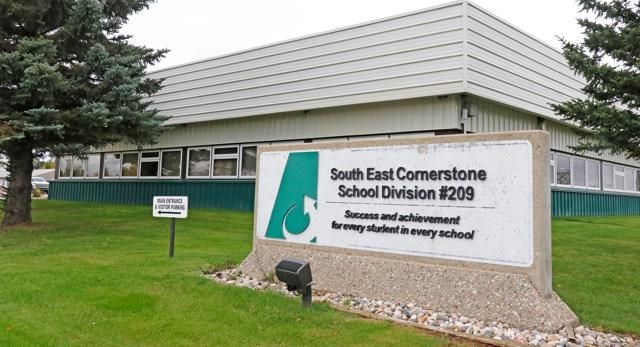WEYBURN — Just guessing here, but the thoughts are that being involved in the learning supports environment in the Â鶹ÊÓƵ East Cornerstone Public School Division requires significant talent and tools. The first round of talents will be found in the professional ranks of the educators, co-ordinators, coaches and therapists.
The tools they use for a variety of needs include training, patience, and knowledge bases built over time. Nothing will be handed to them. They must lead.
Tracey Kiliwnik, co-ordinator of learning supports for SECPSD, knows how the game must be played, rules that apply and the expected results since she is a devotee of the division’s mission statement that reads “Success and achievement for every student in every school.” She and her team of professionals believe in, and adhere to that statement.
That assurance was on display in the Cornerstone boardroom on April 16 when Kiliwnik delivered an update on this area of education within the division. She was accompanied by one of the division’s eight professional speech and language pathologists, Brooke Zulak, who presented an insightful look into her world as it relates to the overall package of assistance that is delivered to young students.
These are young people who require additional help due to various challenges that could be emotional, physical or mentally based. The idea is to work with the student and his or her family to achieve a satisfactory level of achievement. To get to those achievement levels, well, that’s where the learning support teams get fully engaged, ready to deal with failures and celebrate successes.
Kiliwnik started her section of the 45 minute presentation noting there are 251 students within the Cornerstone system who require intensive needs support, compared with 237 in the previous academic year. These students may show multiple disabilities on occasion or frequently, so the professionals must remain alert to the needs at any given time.
Kiliwnik outlined a list of various disorders, diagnosis and diversity of needs within that population and how these needs are met by a series of classroom teachers, support staff and other trained professionals. She noted that in some instances the students, ‘may not require the services all the time, but do get those supports from classroom teachers and learning support teachers,” she said. There were 70 such diverse needs students last year … 67 this year.
The diversity of needs, she explained could range from such physical disabilities as visual impairment or blindness, bipolar and/or anxiety driven disorders, deafness, autism, neurodevelopment disorders, addictive disorders or sundry other impairments that might prevent a young student from moving forward.
She also pointed to the high school pathways such as alternate education and modified programs to achieve the goals.
At the earlier levels, the change in language used from imperative to declarative has proven to be successful and she provided examples of such during her vocal and video presentation.
Visual procession within a three-tiered process was also explained by the co-ordinator for students of all ages with reading impairments.
Kiliwnik then spoke of the division’s speech-language pathologists which included Zulak who she then introduced to the board for the second stage of the presentation.
Zulak referred to the Response to Intervention tiers of assistance and spoke of speech and sound disorders that are addressed by the professionals. She also showed a brief video of an articulation lesson provided to a young student by a member of the speech-language pathology team, Dominique Dupuis.
She spoke of parent involvements and home practice sheets and language skill impairments that the pathologists can help facilitate.
There is a degree of self-advocacy and self-confidence to achieve as well and she admitted, “that’s my favourite part.” She noted that with a smile and laugh since, she said, there is also time to “have some fun and enjoy individual successes.”
Having a robust vocabulary helps students become successful in the classrooms in multiple ways, Zulak said. The students can listen to stories, read more successfully and develop a deeper understanding of topics.
Even pre-reading skills are important, she said, as early years youngsters get to develop skills such as actually holding a book, looking at pictures, being aware of printed words and enjoying story times.
Zulak spoke of the use of outside agencies on occasions when the collaboration teams meet to address the various needs. The teams consist of the school educators, families, and the learning support professionals.
Kiliwnik came back to complete the presentation by explaining the dedication to Jordan’s Principle, noting how the young First Nations child, Jordan River Anderson from Norway House, born with complex medical needs did not receive the services he needed because the governments of Canada and Manitoba could not agree on payments for his care. He died, but the fight for equity created a lasting impact and his legacy now lives on as Cornerstone and other school divisions and care facilities continue to improve the lives of First Nations children and their families with financial support from senior governments.
The two educators/co-ordinators fielded a number of questions from board members during and after they completed their presentations. The questions ranged from cognitive skills to current and ongoing support systems, outside agency assistance, the highest needs areas and resources available and supports for students wishing to move to the post-secondary levels and placements in respective communities.
Kiliwnik and Zulak were thanked by board chairwoman Audrey Trombley and sent off with a round of applause by board members who had embraced the information that had been brought to the boardroom tables.




